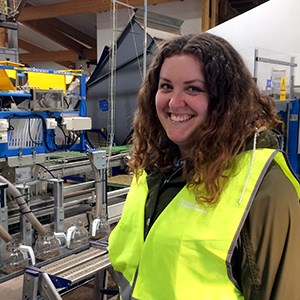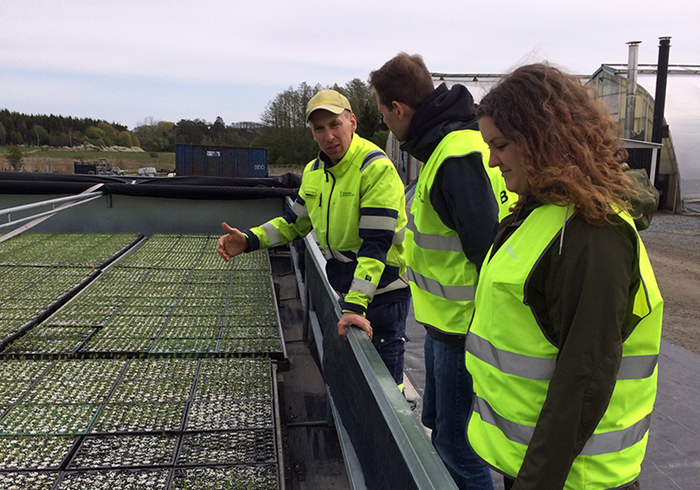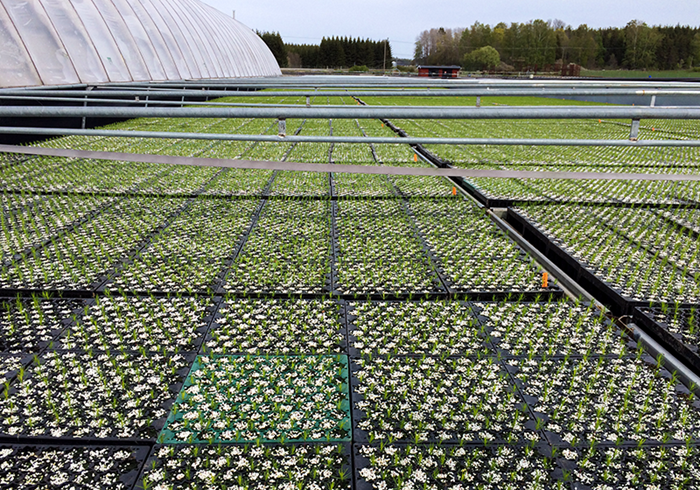Swedish nurseries will be protected more effectively from pests

Nurseries are extra sensitive to pests. In a warmer climate, fungal pathogens will become more common. Therefore, environmentally friendly and sustainable strategies will be developed to combat fungal diseases in forest nurseries in a new project. Rebecca Larsson has just started working as an industrial PhD student at the Department of Forest Mycology and Plant Pathology at SLU and at the company Svenska skogsplantor.
In Sweden, the forest and its sector constitute one of the largest economies and provide jobs to thousands of people. Today the yearly forest growth is larger than the logging activities, which is sustained with continued planting of almost 350 million tree seedlings each year. Of them 171 million are spruce and 157 million pine.
A warmer climates results in more pathogens
With a warmer climate and new invasive pests in Sweden, it is becoming increasingly important to have a functioning plant protection and an effective seed production. The pests can be spread quickly with transported goods and with imported exotic plants. The pests are often different kinds of fungi that can damage the plant both above and below ground.
Rebecca Larsson graduated within forestry science in 2015 at SLU and has worked for about two and a half years as assistant nursery manager at the company Bergvik Skog.
– The aim of my PhD project is to develop knowledge of integrated plant protection, or IPM, as it is also called. I hope to be able to increase knowledge on how fungal spores spread and infect plants and thereby be able to develop environmentally friendly and sustainable strategies for combating fungal diseases in nurseries, says Rebecca.
Seedlings will be protected with different approaches
The integrated plant protection will be developed through several different approaches. For example, the pests will be monitored, different cultivation strategies will be evaluated and environmental factors investigated, both in the nurseries and on plants that have been planted out in the forest.
– I will work both in the field and in the lab during my PhD. I look forward to learning more about sequencing, bioinformatics and data modeling of fungal spread, says Rebecca.
Current control strategies need to change
Today, harmful fungi are combated with various cultivation strategies and with chemical pesticides, fungicides. Fungicides often contain substances that are hazardous for the environment and human health. Some of the fungicides used today may soon be banned within the EU. In addition, there are problems with harmful fungi developing resistance to fungicides.
Beneficial organisms such as certain fungi and bacteria can increase tolerance to stress factors and also increase growth of pine and spruce. These organisms are naturally found in woodland. In nurseries relatively sterile substrates are often used and the combination of fungicides and high nutrient content minimizes the presence of beneficial organisms. Therefore, the effects of different beneficial organisms will be evaluated with the hope of finding organisms that can both combat pathogenic fungi and are growth-promoting.
– It is great to have employed Rebecca for this project. As she has previously worked in this industry, I think she will be very suitable for this project, says Åke Olson, who is Rebecca's main supervisor.

